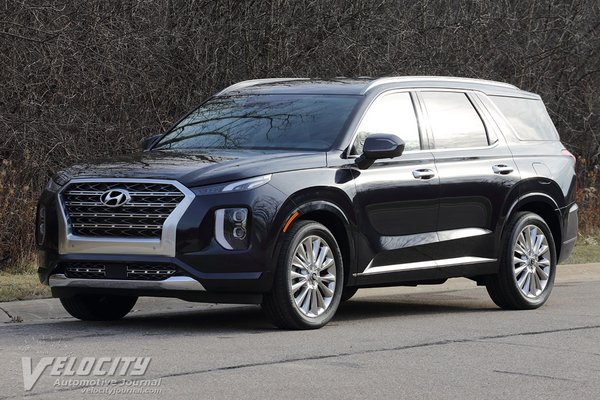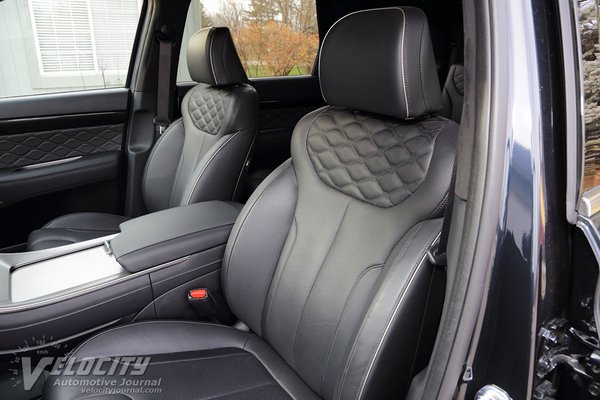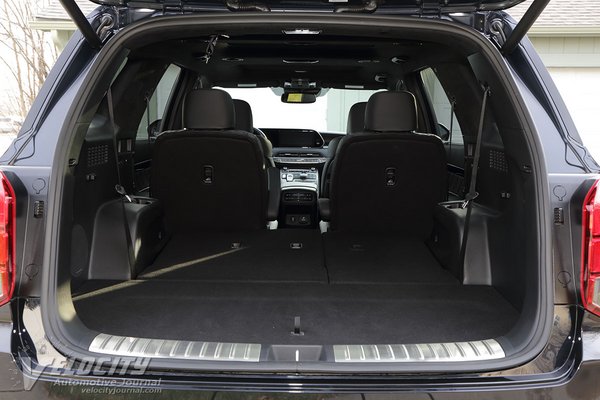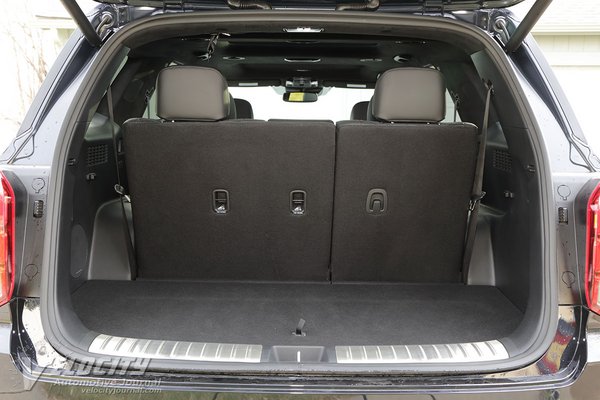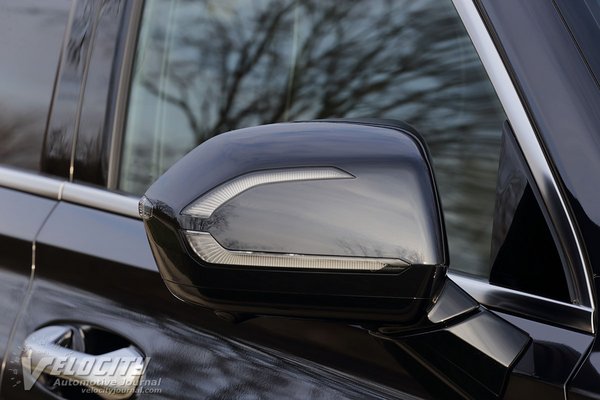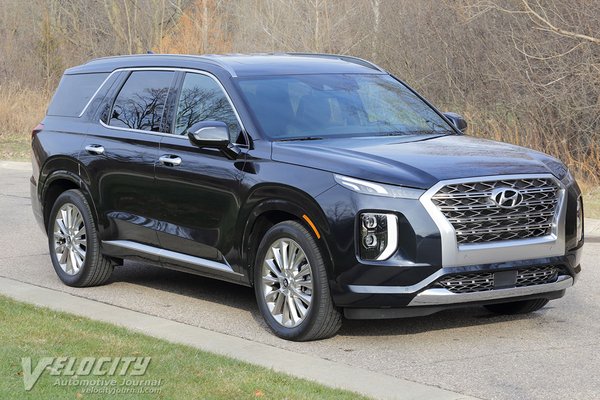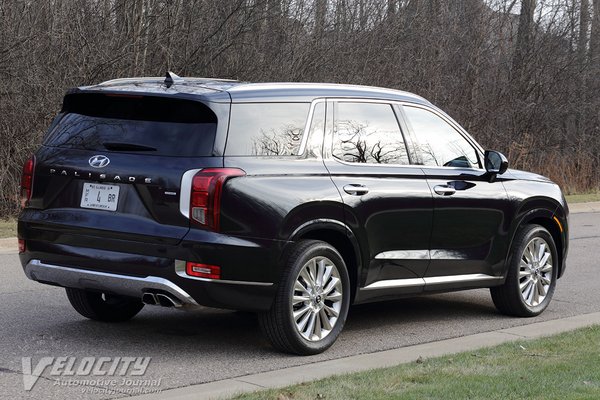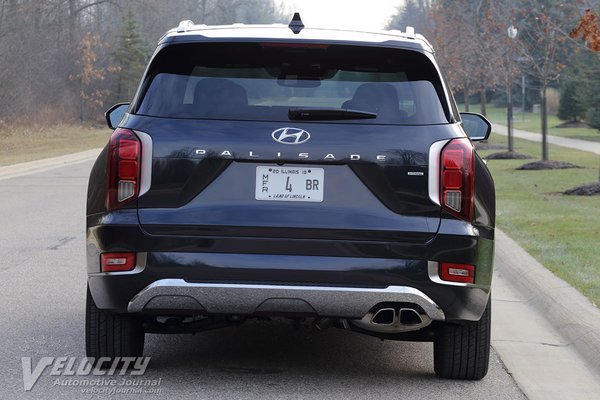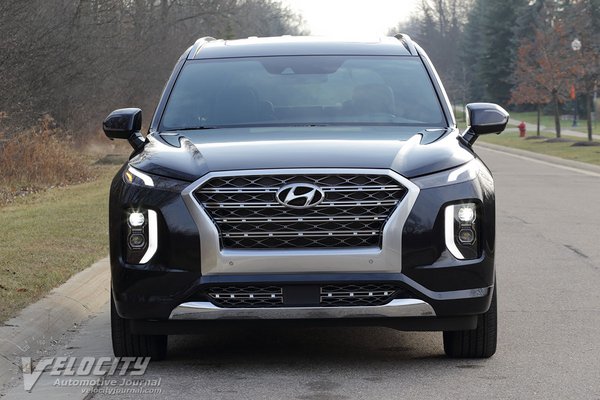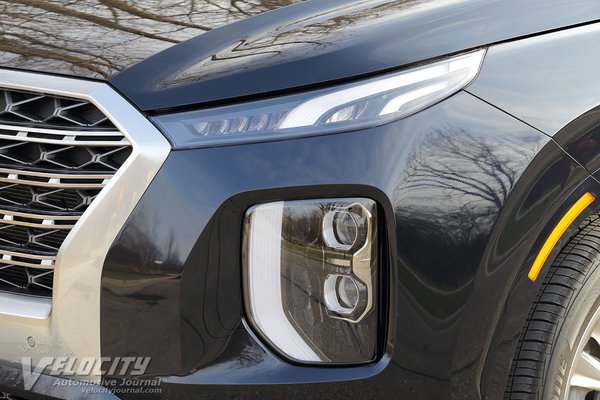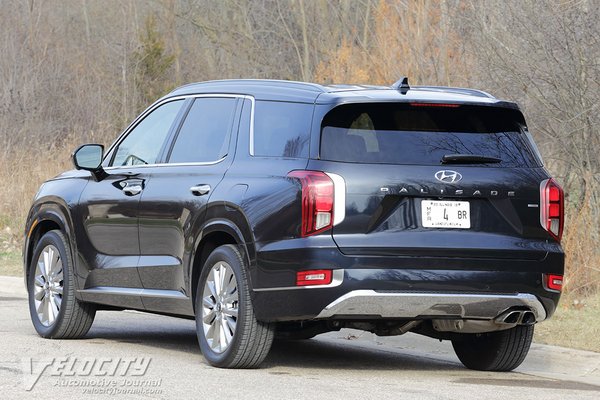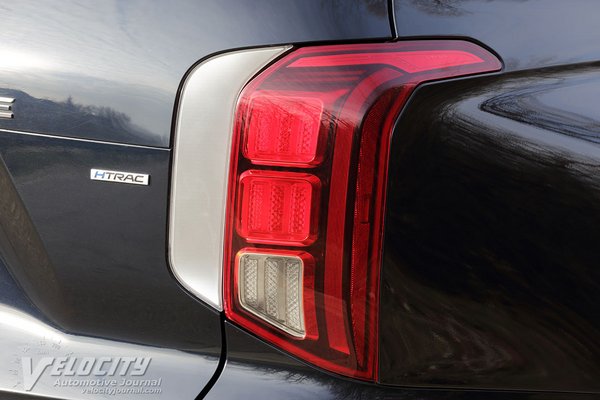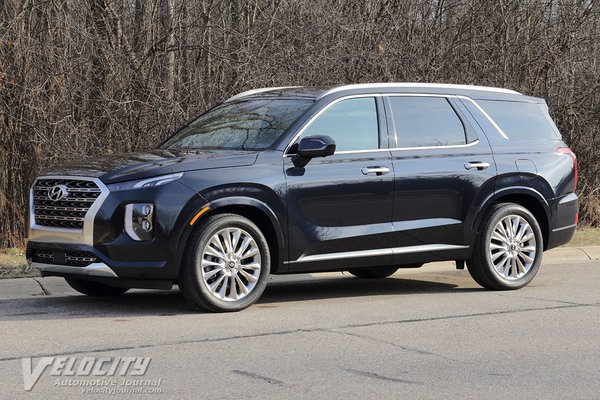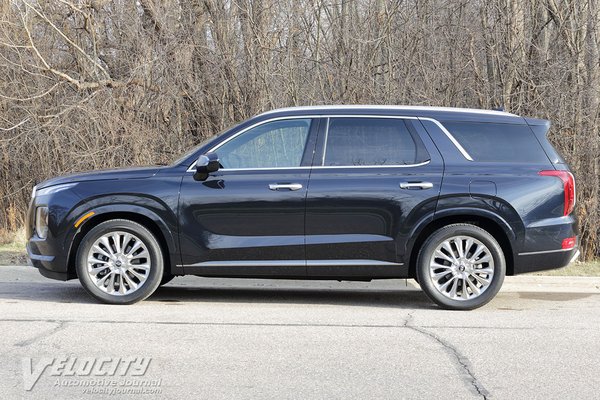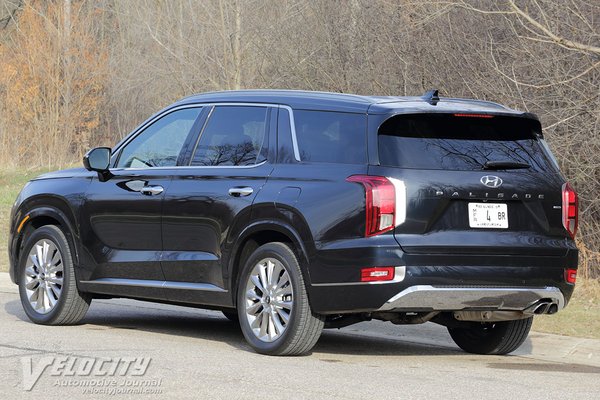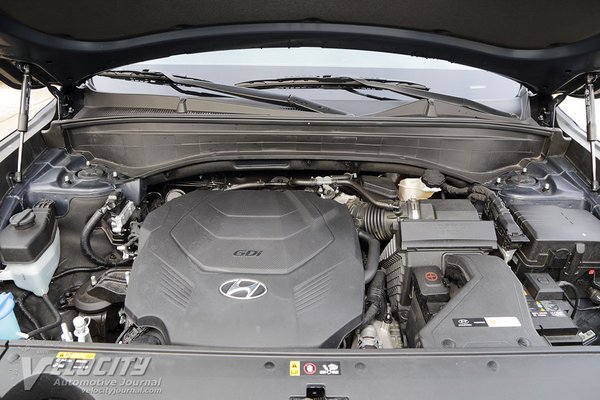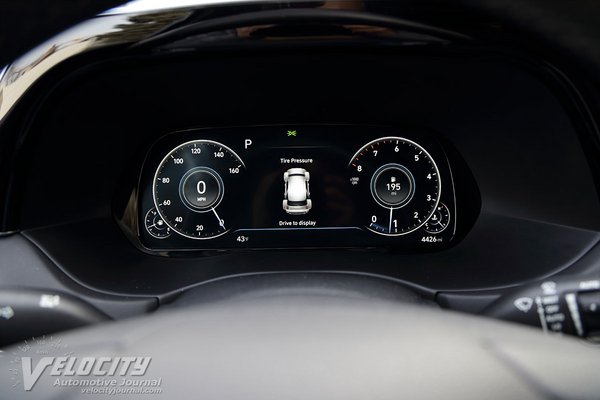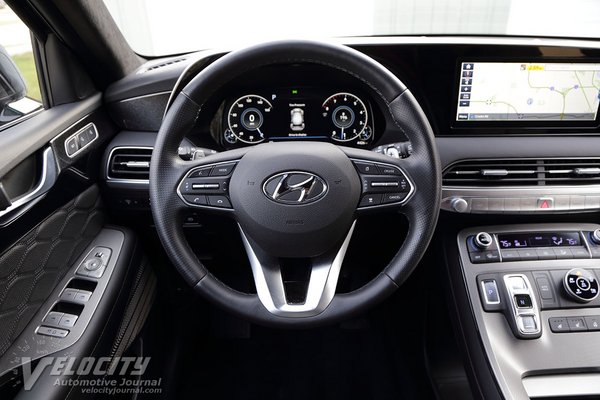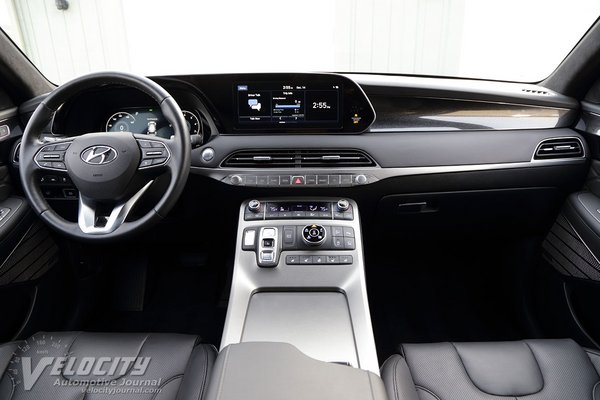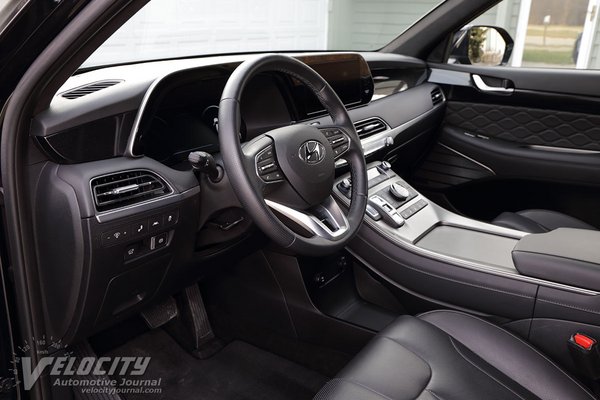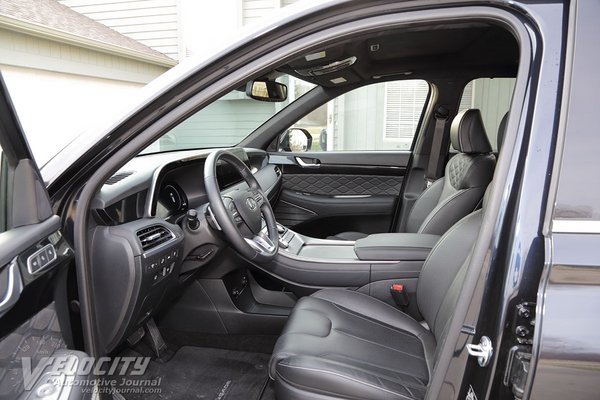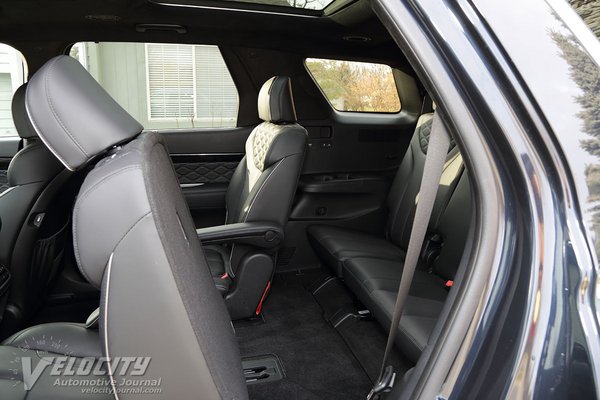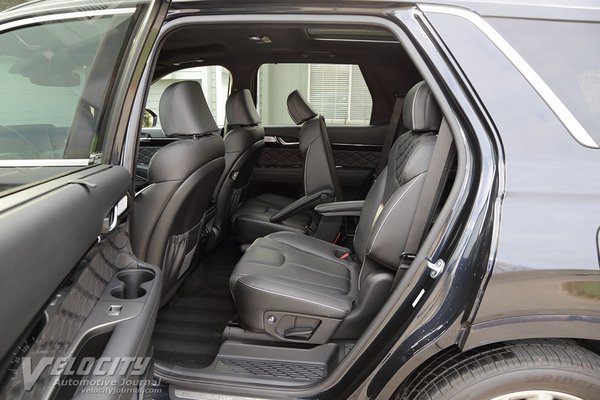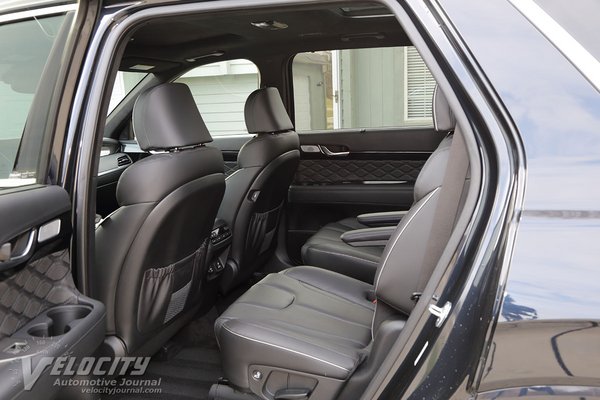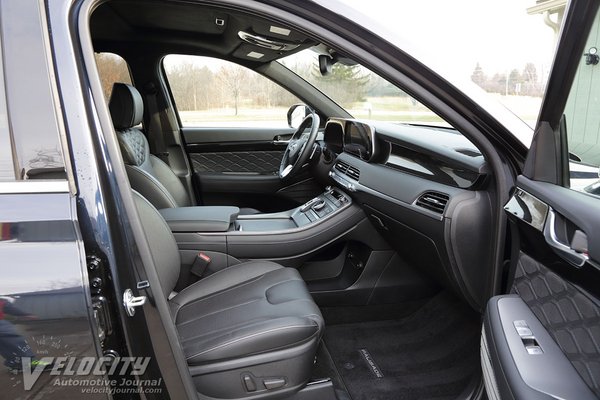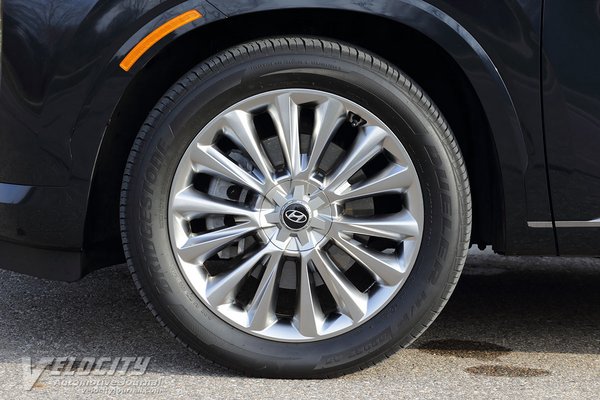2020 Hyundai Palisade Limited AWD
03/03/2020
Shahed Hussain
The continued popularity of SUVs demands manufacturers expand the product lineup to capture a greater share of this profitable segment. Hyundai has had several midsize SUVs over the past dozen years, starting with the Veracruz, followed by the long wheelbase Santa Fe (renamed Santa Fe XL). The new Palisade replaces the Santa Fe XL at the top of the range. Below the Palisade is the recently redesigned 5-passenger Santa Fe, followed by the compact Tucson, and the even smaller Kona and new Venue. Hyundai even has a couple of electric SUVs in select markets: the Kona Electric and NEXO Fuel Cell.
Hyundai keeps the Palisade model range simple with only three versions: SE ($31,775), SEL ($33,725) and Limited ($44,925). The SE seats eight passengers, while the SEL can seat seven or eight; the Limited is 7-passenger only. All Palisades are powered by a V-6 coupled to an 8-speed automatic. All-wheel drive is an optional extra ($1,700). We tested a 7-passenger Palisade Limited AWD, which has no available option packages. The total MSRP with the $1,120 freight charge added up to $46,045. Significant standard equipment includes LED headlights and taillights, 8-way power driver and 4-way front passenger seats, heated and ventilated front and rear seats, heated steering wheel, 10.25 in. touchscreen, navigation, surround view monitor, 12-speaker Harman Kardon audio system, 12.3 in. digital instrument cluster, head-up display, Apple CarPlay and Android Auto. Safety technologies are also comprehensive: forward collision avoidance, blind spot collision avoidance, lane keeping assist, rear cross-traffic collision avoidance, trailer sway control, and stability control.
A 3.8L V-6 mated to an 8-speed automatic drives the front wheels, or all four wheels with optional AWD. The Atkinson-cycle aluminum six is rated 291 hp @ 6,000 RPM and 262 lb.-ft. @ 5,200 RPM. The V-6 uses direct fuel-injection, dual overhead cams, and variable valve-timing. A short first gear (4.808:1) coupled to a 3.648:1 final drive ratio is optimized for a quick launch from a stop. The 8-speed automatic has overdrive ratios for seventh (0.799:1) and eighth (0.648:1) gears. EPA fuel consumption is rated at 19/24 MPG (city/hwy.) for AWD powertrains. Opting for FWD improves the highway rating to 26 MPG, but the city fuel consumption remains unchanged.
The Palisade's suspension consists of MacPherson struts and stabilizer bar in front; at the rear is a multi-link layout with coil springs, dampers and a stabilizer bar. Steering is via a motor-assisted rack-and-pinion system with 2.87 turns lock-to-lock. Brakes are discs front and rear: 13.4 in. dia. front rotors and 12.0 in. dia. rear rotors. The SEL gets standard 20-in. dia. alloy wheels with 245/50R20 Bridgestone Dueler H/P all-season tires. Both the SE and SEL have 18-in. dia. alloy wheels shod with 245/60R18 tires, although the larger wheel and tire package are available in the SEL. A FWD 8-passenger Palisade weighs in at 4,231 lbs. The 7-passenger AWD Palisade is the heaviest variant at 4,387 lbs. Maximum towing capacity is 5,000 lbs.
Hyundai's interior team created a contemporary and uncluttered design theme with textured surfaces, matte aluminum trim and premium materials. The instrument cluster is a full digital display that simulates an analog speedometer and tachometer, along with smaller fuel and coolant temperature gauges; a center display shows vehicle status information. The tachometer needle rotates counterclockwise, which appears oddly distracting. Switching powertrain drive modes changes the instrument cluster color palette. The leather-wrapped steering wheel has integrated cruise, phone, audio, and vehicle status controls. Steering wheel-mounted paddles enable manual transmission shift control. A widescreen 10.25 in. touchscreen display is nested within the dash. Audio control buttons and knobs are conveniently located below the center dash vents. The climate control interface is readily accessible and angled up instead of being vertically stacked. An electronic transmission shifter uses pushbuttons to select transmission modes. Powertrain drive modes are available via a rotary knob on the center console. A 12V power outlet is located under the center console. Second row passengers can access USB ports on the front seatbacks plus 12VDC and a 120V AC outlets on the center console. A total of 7 USB ports are available throughout the interior. Hyundai placed 16 cupholders within the interior to ensure that everyone has a place to stash drinks. Front door pocket storage is limited, but the center console bin is spacious.
Perforated leather covers the front seats, which are heated and cooled via buttons on the center console. Both front seats are power adjustable, but the driver's seat also gets 4-way lumbar support. To accommodate most occupants, the front seats have minimal thigh bolstering, although lateral torso support is decent. Front headroom is acceptable for occupants up to 6-ft. tall; second and third row passengers up to 5-10" can be accommodated easily. The Palisade Limited gets captain's chairs for the second row, improving access to the third-row seats. Both second and third row seats can recline for added comfort, although the third row is best suited for children due to the limited legroom.
Hyundai decision to power the Palisade with a normally-aspirated V-6 makes sense for a 2+ ton SUV. However, since peak torque arrives 5,200 RPM, moving from a stop quickly requires mashing the throttle. The short first gear mostly compensates for the low-RPM torque deficit. Above 2,000 RPM, the V-6 cranks out decent torque and the Palisade is adequately responsive. Hyundai's 8-speed automatic shifts seamlessly to maximize available torque and acceleration. We never used the steering wheel-mounted shift paddles, but it's nice that a manual shifting option is available.
Hyundai engineers tuned the Palisade for ride comfort, so the suspension soaks up patched pavement and potholes with remarkable competency. The Palisade's steering response feels slow as the body rolls and settles around curves. As with most SUVs, the suspension is tuned for moderate understeer. The steering filters out most road surface textures, typical for luxury-oriented SUVs. Hyundai's lane departure warning and blind spot warning buzzers seem overly sensitive to minor steering adjustments, so we turned them off. Tire and wind noise are subdued at 70+ MPH, contributing to the serene feel within the passenger compartment. The tall overdrive top gear reduces engine RPM so the V-6 is appropriately hushed at highway speeds.
Hyundai's continued efforts to expand its share of the midsize SUV market have resulted in the most luxurious sport utility from this Korean manufacturer. The Palisade melds a solid powertrain along with ample standard equipment even in the base SE model. Hyundai has positioned the Palisade to steal customers from the rival brands simply by offering a superior value in an attractive package. This is nearly always a recipe for success, especially in a market where sticker prices are rapidly spiraling up.

